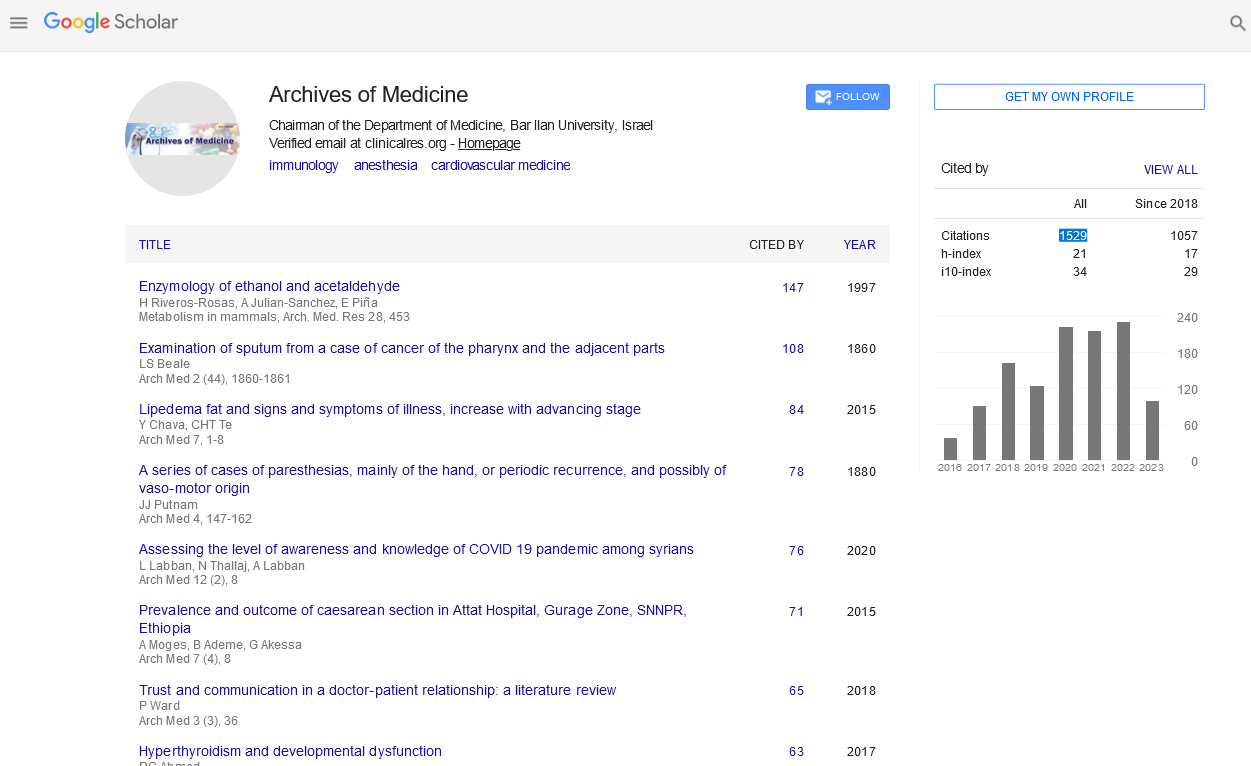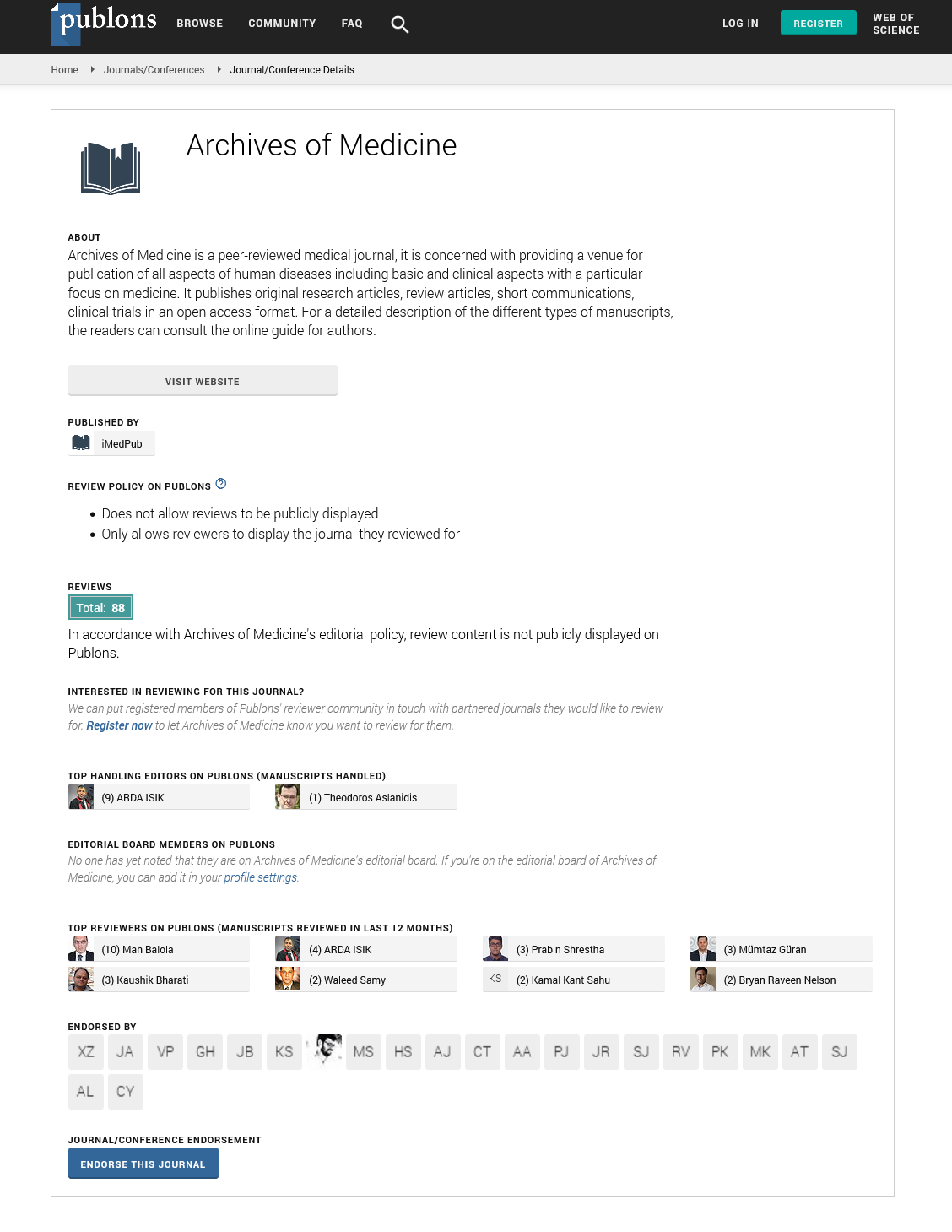Perspective - (2022) Volume 14, Issue 7
Neurogenic Parkinson’s disease effects on EEG signal through deep recurrent neural network
Jen Hong*
Department of Biochemistry-Toxicology, Avicenna Military Hospital of Marrakech, Morocco
*Correspondence:
Jen Hong, Department of Biochemistry-Toxicology, Avicenna Military Hospital of Marrakech,
Morocco,
Email:
Received: 25-Jun-2022, Manuscript No. ipaom-22-12986;
Editor assigned: 28-Jun-2022, Pre QC No. P-12986;
Reviewed: 17-Jul-2022, QC No. Q-12986;
Revised: 22-Jul-2022, Manuscript No. R-12986;
Published:
30-Jul-2022
Abstract
In the context of critical care, this article will offer a narrative assessment of the data pertaining to theories, diagnoses, and treatments for neurogenic pulmonary edoema (NPE). Although the precise mechanisms causing NPE are still unknown, putative mechanisms for the condition include increased catecholamine release, increased vagal tone, and increased capillary permeability. This is known as the "blast injury theory" because it causes pulmonary vasoconstriction as a result. The diagnosis entails spotting pulmonary edoema symptoms in the presence of a brain damage, and the most effective treatment methods seem to be those that aim to preserve a normal physiological condition. Any acquired lesion to the brain constitutes an acute brain injury (ABI), which is a major global cause of morbidity and mortality. Twenty to thirty percent of people with ABI get lung damage. Despite being a significant complication, neurogenic pulmonary edoema (NPE) is frequently underdiagnosed.
Keywords
Prognosis; Early evolution; COVID-19; Laboratory data
Introduction
In this Study a brand-new computer-aided diagnosis
technique for identifying Parkinson's disease was
presented (PD). This algorithm's innovative Poolingbased
Deep Recurrent Neural Network (PDRNN)
is a powerful deep learning technique. The brain's
functionality gradually deteriorates with Parkinson's
disease. The electroencephalogram, or EEG, signal
is employed for early disease identification due to its
connection to brain abnormalities. This article examines
the electroencephalogram signals of 20 Parkinson and
20 healthy individuals. Additionally, a PDRNN learning
approach is used to address the demand for the conventional
feature presentation phase on the dataset in question.
The suggested approach in this research can provide the
necessary precision, sensitivity, and specificity (88.31,
84.84 and 91.81 percent, respectively). Furthermore, our
derived [1-5].
Patients and Methods
In the brain, the max number of the neurons belongs
to the birth time . Dissimilar to other cells of the human
body, the brain neurons can’t be fixed. So, over the time
they die and they can’t be replaced . Generally, Parkinson
disease results by the death of the nerve cells . The nerve
cells generate the dopamine, which is a chemical material.
This substance mainly controls the body motions. So, the
quantity of the generated dopamine reduces after dying the
nerve cells. Then, this situation begins to affect different
communication modes of the brain. This disease appears
mostly in people with ages about 50 or higher. Unstable
posture, muscles’ stiffness, slow motions, tremor, balance
losing as well as the damaged fine motor skill are some
initial signs for PD .Statistically, about ten million persons
suffer the Parkinson disease (reported by World Health
Organization) . Once there are no visible motor (or nonmotor)
signs, it’s hard to detect the PD.
Hence, the intelligent detection methods can be useful
for early diagnosis of the abnormal signs These methods
are automated diagnosis systems, and they are able to
objectively detect the Parkinson disease by EEG signals.
Using the EEG signals, functions of cortical (or sub-cortical)
segments in the brain can be simply detected. As well, other
disease related to the brain such as Alzheimer and epilepsy
can be identified by these signals Thus, the EEG signals are
employed in the present work for obtaining a computeraided
system in order to diagnose the Parkinson disease.
Conclusion
In patients with ABI, NPE is a prevalent cause of lung
damage and should be taken into account with other
frequent causes such aspiration pneumonia, pulmonary
trauma, and pulmonary embolism. NPE development is
linked to worse neurologic outcomes and higher mortality.
Acute CNS insults that cause catecholamine surge are the
main method by which NPE is caused. Other processes
include left ventricular strain Takotsubo cardiomyopathy,
shifts in blood volume from the periphery to the pulmonary
circuit, and pulmonary venoconstriction. The existence
of respiratory symptoms and related imaging results in
the presence of a neurologic insult are necessary for the
diagnosis. Euvolemia normocapnia and normoxemia
should all be maintained as a primary goal of management
measures.
Conflict of Interest
The authors declare no competing interests.
All authors declare that the material has not been
published elsewhere, or has not been submitted to another
publisher.
Data Availability
Authors declare that all related data are available
concerning researchers by the corresponding author's
email.
Acknowledgments
None.
REFERENCES
- Vaira LA, Salzano G, Fois AG, et al. Potential pathogenesis of ageusia and anosmia in COVID-19 patients. Int Forum Allergy Rhinol. 2020;9:1103-1104.
Google Scholar, Crossref, Indexed at
- Zhu N, Zhang D, Wang W, et al. A novel coronavirus from patients with pneumonia in China, N Engl J Med. 2020;382:727-733.
Google Scholar, Crossref, Indexed at
- Wu Y, Ho W, Huang Y, et al. SARS-CoV-2 is an appropriate name for the new coronavirus. Lancet. 2020;395:949-950.
Google Scholar, Crossref, Indexed at
- Gondi S, Beckman AL, Deveau N, et al. Personal protective equipment needs in the USA during the COVID-19 pandemic. Lancet. 2020;395:e90-91.
Google Scholar, Crossref, Indexed at
- Wang D, Hu B, Hu C, et al. Clinical characteristics of 138 hospitalized patients with 2019 novel coronavirus–infected pneumonia in Wuhan, China. JAMA 2020;323:1061-1069.
Google Scholar, Crossref, Indexed at






